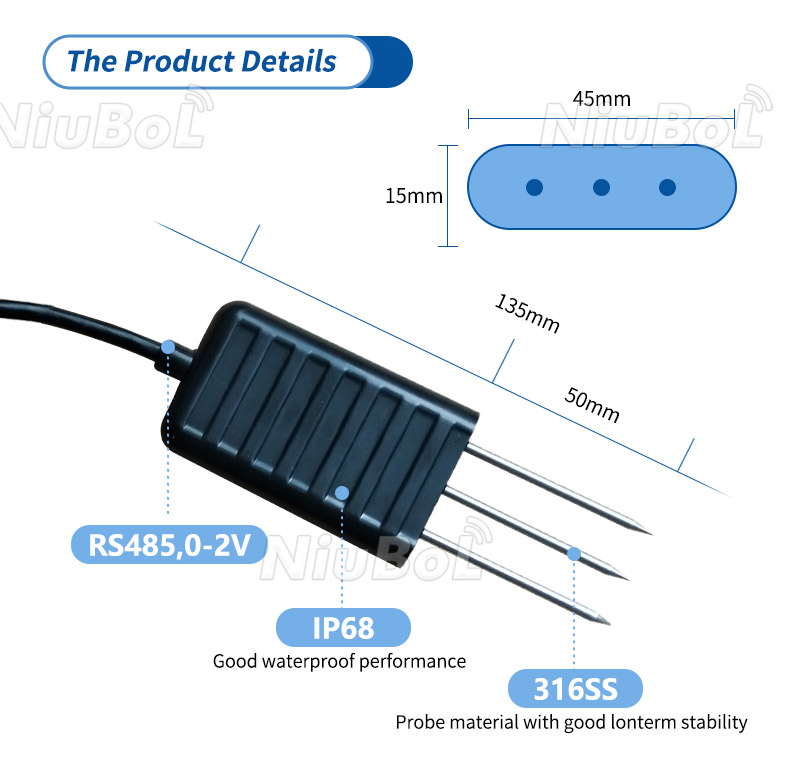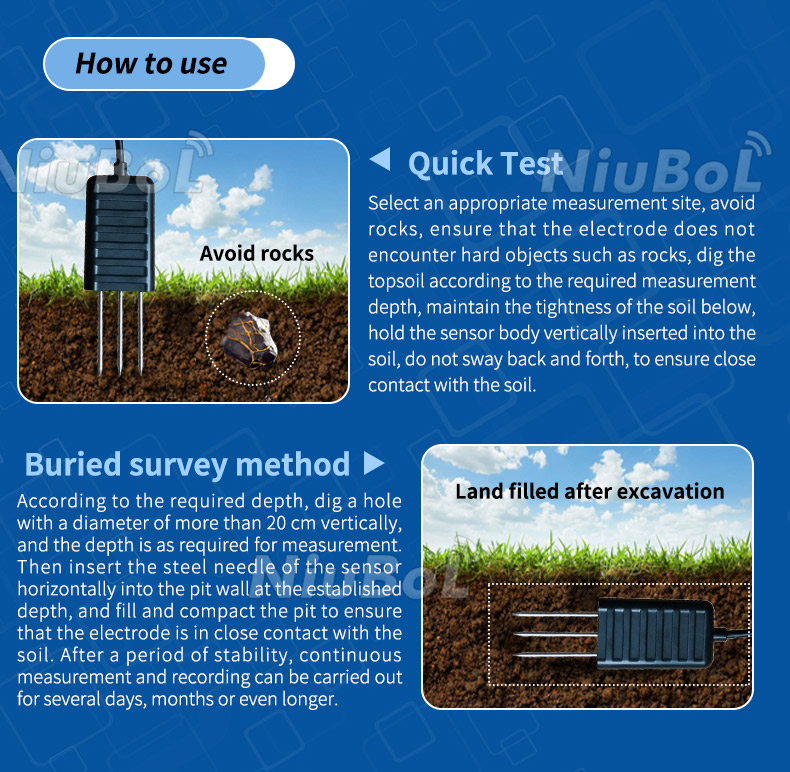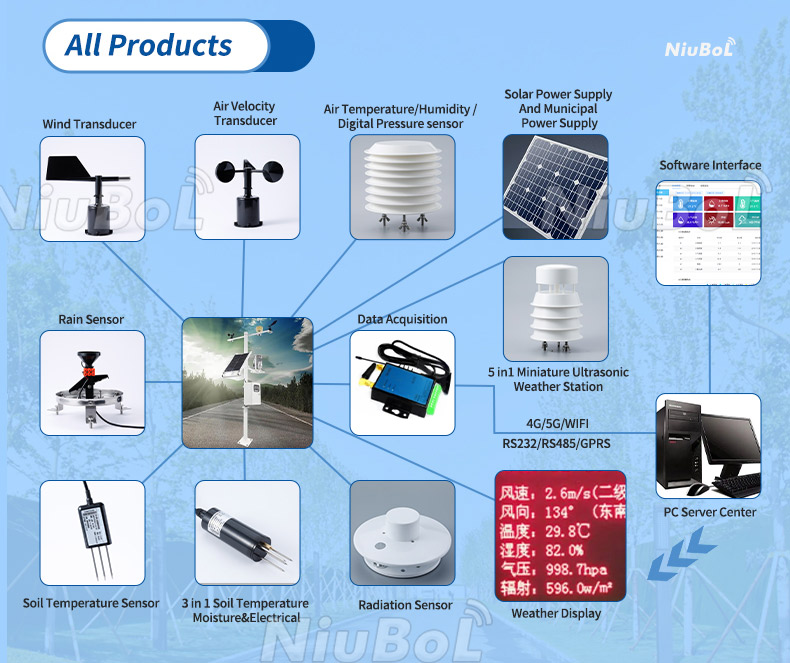

 咨询热线 15388025079
咨询热线 15388025079 时间:2022-07-01 22:12:40 浏览量:879
土壤三合一传感器指的是哪三个参数?常规测量参数就这三个!
传感器的种类很多,比如土壤温度、湿度、盐度、电导率传感器等等,在实际农业生产中,需要监测的参数非常多,因此诞生了土壤三合一传感器这样的多参数仪器。土壤三合一传感器主要监测哪三个参数呢?
nsor指的是什么?常规测量参数包括土壤湿度,温度,电导率等等。
三合一传感器指的是土壤温度、水分、电导率等参数,用户可以根据自身需求,合理选择传感器的搭配方案,从而精准测量详细土壤参数。
NBL-TMC传感器测量精度高,响应速度快,输出非常稳定,该类传感器可以观测各种土壤,该设备的电极采用经过特殊处理的合金材料,因此不仅能承受强大的外力冲击,而且不易损坏。

1.温度
该仪器可测量多种粉状多孔介质及液体的温度,由电源模块、温度传感模块、传输模块、温度补偿模块、数据处理模块等组成,因此测量精度高,采用不锈钢作为探头,耐腐蚀性强,并可根据用户的需要设计成不同的形状,方便人们测量。

2. 水分
它采用高频电子技术,应用频域反射原理,可以准确测量土壤中的水分含量,土壤中适当的水分可以保证植物的正常生长,通过根部的吸收和叶片的光合作用,促进干物质的积累,提高植物的产量。

3. 电导率
测量土壤电导率可以监测土壤酸化、次生盐渍化等情况,判断当前土壤是否适合作物生长。监测土壤电导率可以了解土壤的质量和物理性质,分析田间参数时空分布的差异,为现代精准农业奠定良好的基础。
通过数据采集器及气象软件可以快速分析出土壤的详细数据,方便人们随时了解植物的生长状况。
上一页:超声波气象站厂家报价
下一页:校园气象站包含的仪器和设备
相关推荐
相关产品